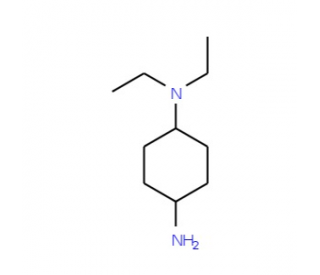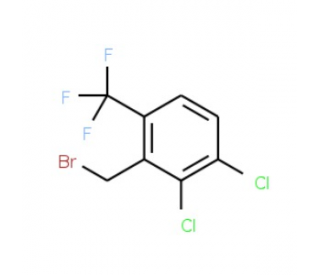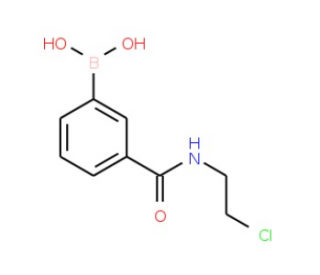详细说明
Purity
>95%, by SDS-PAGE under reducing conditions and visualized by silver stain
Endotoxin Level
<0.10 EU per 1 μg of the protein by the LAL method.
Activity
Measured by its binding ability in a functional ELISA.
When Recombinant Human IGF-II R (Catalog # 6418-GR) is immobilized at 2 μg/mL (100 μL/well), the concentration of Recombinant Mouse CREG that produces 50% of the optimal binding response is found to be approximately 3-15 ng/mL.
Source
Mouse myeloma cell line, NS0-derived Arg32-Gln220, with a C-terminal 6-His tag
Accession #
N-terminal Sequence
AnalysisArg32
Predicted Molecular Mass
22.3 kDa
SDS-PAGE
25-35 kDa, reducing conditions
Carrier Free
What does CF mean?
CF stands for Carrier Free (CF). We typically add Bovine Serum Albumin (BSA) as a carrier protein to our recombinant proteins. Adding a carrier protein enhances protein stability, increases shelf-life, and allows the recombinant protein to be stored at a more dilute concentration. The carrier free version does not contain BSA.
What formulation is right for me?
In general, we advise purchasing the recombinant protein with BSA for use in cell or tissue culture, or as an ELISA standard. In contrast, the carrier free protein is recommended for applications, in which the presence of BSA could interfere.
1697-CR |
| 1697-CR/CF |
Formulation Lyophilized from a 0.2 μm filtered solution in PBS with BSA as a carrier protein. | Formulation Lyophilized from a 0.2 μm filtered solution in PBS. | |
Reconstitution Reconstitute at 100 μg/mL in PBS containing at least 0.1% human or bovine serum albumin | Reconstitution Reconstitute at 100 μg/mL in PBS. | |
Shipping The product is shipped at ambient temperature. Upon receipt, store it immediately at the temperature recommended below. | Shipping The product is shipped at ambient temperature. Upon receipt, store it immediately at the temperature recommended below. | |
Stability & Storage: Use a manual defrost freezer and avoid repeated freeze-thaw cycles.
| Stability & Storage: Use a manual defrost freezer and avoid repeated freeze-thaw cycles.
|
Background: CREG
Cellular repressor of E1A-stimulated genes (CREG) is a 28 ‑ 33 kDa member of the CREG family of proteins. Mouse CREG is synthesized as a 220 amino acid (aa) precursor that contains a 31 aa signal sequence and a 189 aa mature chain (SwissProt # O88668) (1, 2). Mass spectrometric analysis of recombinant CREG revealed that the protein contains phosphorylated oligosaccharides at either of its two N-glycosylation sites (1). Mouse CREG shares 78% aa sequence identity with human CREG. CREG is a secreted glycoprotein ubiquitously expressed in mammals (3). It is largely secreted by fibroblasts missing both mannose 6‑phosphate receptors (1). This is not observed in cells lacking only one of them (1). CREG is proposed to participate in a wide range of cellular processes. Among them, CREG has been found to antagonize transcriptional and cellular transformation by the adenoviral E1A oncoprotein (1, 3, 4), to induce differentiation while attenuating cellular proliferation (1, 3, 4, 5), to regulate the levels of the signaling kinases ERK1/2 (1, 6), and to mediate the glucocorticoid-induced proliferation of ileal epithelial cells (1, 7). These observations have led to the notion that CREG may play an important role in the control of cell growth and differentiation (1, 3). In a search for potential interaction partners, CREG was found to bind directly to the mannose 6‑phosphate/insulin-like growth factor II receptor (M6P/IGF2R) (1). Since this interaction was shown to depend on N-glycosylation of CREG, it was inferred that CREG binds to M6P/IGF2R via M6P residues located in its N-glycans (1, 3, 8). Other studies have shown that CREG interacts with M6P/IGF2R in an M6P-dependent manner (1, 9 ‑ 12). Recent results indicate that human CREG carries M6P moieties at two of its three N-glycosylation sites (1, 13). Han et al. showed that CREG is significantly up-regulated at both the mRNA and protein levels during phenotypic conversion of proliferative and synthetic smooth muscle cells (SMCs) to non-proliferative and differentiated SMCs in vitro (3). In addition, CREG over‑expression in cultured SMCs may inhibit cellular proliferation and promote differentiation; whereas CREG knockdown prevents serum starvation‑induced SMCs maturation and growth arrest (3). Moreover, CREG is down-regulated in the vascular media after balloon injury in the rabbit carotid artery (3). Adenovirus-mediated CREG over‑expression in injured arteries inhibits SMCs proliferation and attenuates neointimal hyperplasia in vivo (3, 14). Research thus suggests that CREG plays a critical role in keeping cell or tissue in a mature, homeostatic state by antagonizing pathological de‑differentiation and overgrowth (3).
References:
Schahs, P. et al. (2008) Exp. Cell Res. 314:3036.
Han, Y. et al. (2008) Cardiovasc. Res. 78:597.
Han, Y-L. et al. (2008) Genes Cells 13:977.
Veal, E. et al. (1998) Mol. Cell. Biol. 18:5032.
Veal, E. et al. (2000) Oncogene 19:2120.
Xu, L. et al. (2004) J. Hypertens. 22:1579.
Gordon, P.V. et al. (2005) J. Endocrinol. 185:265.
Di Bacco, A. et al. (2003) Oncogene 22:5436.
Journet, A. et al. (2000) Electrophoresis 21:3411.
Journet, A. et al. (2002) Proteomics 2:1026.
Sleat, D.E. et al. (2005) Proteomics 5:1520.
Kollmann, K. et al. (2005) Proteomics 5:3966.
Sleat, D.E. et al. (2006) Mol. Cell. Proteomics 5:686.
Wang, N. et al. (2008) Scand. J. Immunol. 67:340.
Long Name:
Cellular Repressor of E1A-stimulated Genes
Entrez Gene IDs:
8804 (Human); 433375 (Mouse)
Alternate Names:
cellular repressor of E1A-stimulated genes 1CREG; cellular repressor of E1A-stimulated genes; CREG; CREG1; protein CREG1










 粤公网安备44196802000105号
粤公网安备44196802000105号